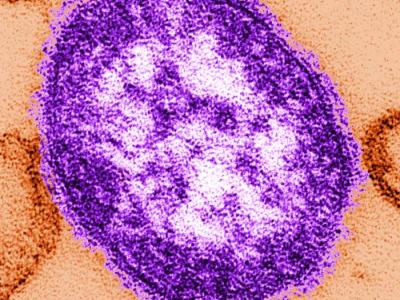Saudi Arabia reports 2 more MERS cases
The Saudi Arabia Ministry of Health (MOH) said today there were two new cases of MERS-CoV in that country, one linked to camel exposure.
A 45 year-old Saudi man from Al Aflaj is in stable condition after presenting with symptoms of MERS-CoV (Middle East respiratory syndrome coronavirus). The MOH said the man had direct exposure to camels, a known risk factor for MERS. Though the route of transmission is unknown, contact with camels, including drinking raw camel milk, can put people at risk.
A 29-year-old Saudi woman from Hafar Al Batin is also in stable condition after being diagnosed with MERS. The woman was symptomatic, and her case is listed as primary, meaning she had no known exposure to other MERS patients.
The new cases raise Saudi Arabia's MERS-CoV total to 1,481 cases, 617 of them fatal. Ten people are still being treated for their infections.
Nov 17 MOH report
WHO adds details for 2 H7N9 cases in China
The World Health Organization (WHO) today shared additional information on two H7N9 avian influenza cases recently reported from China, which appear to mark the fifth wave of illnesses in humans.
One of the patients is a 77-year-old woman from Zhejiang province whose symptoms began on Oct 6. She had been exposed to live poultry before she got sick and is hospitalized in severe condition, according to the WHO.
The other is an 89-year-old man from Jiangsu province who started having symptoms on Oct 20. He didn't have any known exposure to live poultry, and he is also reported to be in severe condition.
The WHO said China's government has stepped up surveillance, enhanced medical care for the disease, and launched risk communication efforts aimed at the public. It said it expects more H7N9 cases to be reported in humans as long as the disease continues to circulate in animals and the environment, but added that human infections with the virus are still unusual and should be monitored closely to watch for changes in virulence or transmissibility that might make it a bigger public health threat.
The WHO said it has received reports of 800 H7N9 cases since 2013, when the first infections were detected in humans, a number very close to the 809 cases noted in a case list maintained by FluTrackers, an infectious disease news message board.
Nov 17 WHO statement
Nov 11 CIDRAP News scan "H7N9 avian flu sickens two in China"
FluTrackers H7N9 case list
Listeria dose findings from 2015 ice cream outbreak
An investigation into a 2015 Listeria monocytogenes outbreak linked to Blue Bell ice cream from two production facilities offered researchers a unique opportunity to study the infectious dose, and a team led by experts from the US Food and Drug Administration (FDA) published its findings yesterday in Emerging Infectious Diseases.
The outbreak involved 10 illnesses in 3 states, with all of the patients hospitalized and 3 deaths reported.
In their probe of exposure levels, researchers focused on four patients clustered at a single Kansas hospital for whom the FDA was able to collect samples of ice cream for microbiologic testing, which confirmed the link between the contaminated ice cream and the illnesses. All four patients had underlying medical conditions, a known risk factor for susceptibility to the disease, and three patients with available food histories had consumed milkshakes made with the tainted ice cream.
Ice cream can harbor Listeria but doesn't support its growth, and contamination levels were probably stable over the shelf life of the product, the team said. The mean contamination level in the milk shakes, estimated to be 8 cells per gram of ice cream, was relatively low compared with some outbreaks. However, the extremely high contamination level found in the ice cream may have enabled growth on milkshake machines, though no Listeria was found from swabs of the machine taken after the outbreak was detected.
The case cluster at a single hospital could point to systemic problems at the facility, but it's also possible that the immune-compromised status of the patients exposed to contaminated ice cream contributed to the event. Heightened suspicion among medical staff may have also increased the chances of identifying cases, the team wrote.
Nov 16 Emerg Infect Dis study
Jun 10, 2015, CIDRAP News scan "CDC calls Blue Bell Listeria outbreak over"
Yemen cholera outbreak expands, sickening more than 4,800
Yemen's health ministry is now reporting 4,825 suspected cholera cases, reflecting a steep increase from the 2,733 cases reported on Nov 7, the WHO said today in an update from its Eastern Mediterranean regional office (EMRO). So far 89 cases are confirmed, and 61 deaths have been reported.
The outbreak began in early October and has now spread to 11 of the country's 22 governorates. Though cholera is endemic in Yemen, ongoing conflict has stretched the capacity of the country's health system, the WHO said.
The WHO is working with Yemen and other partners to coordinate the outbreak response. Surveillance for acute watery diarrhea has been increased in all governorates, and 21 cholera treatment centers have been set up in affected areas.
About 7.6 million people live in areas affected by the outbreak, according to the WHO.
Nov 17 WHO EMRO outbreak update
Nov 7 CIDRAP News scan "WHO: More cholera in Yemen"










